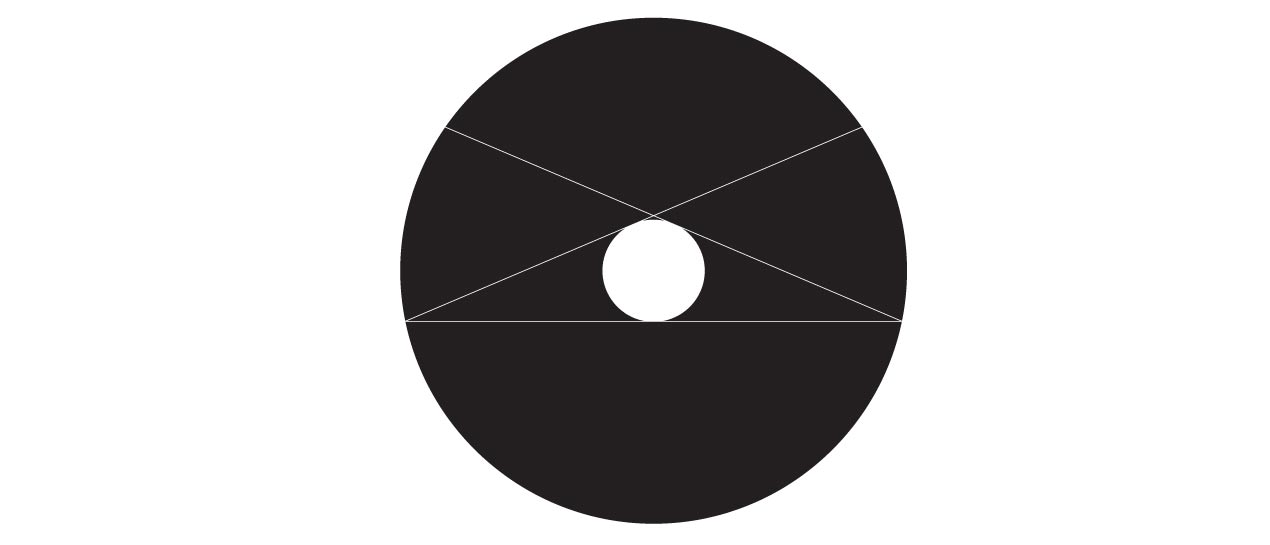
Photo/Eye/Bermuda/Triangle/Outsider Art
”In the Bermuda Triangle of ‘photography,’ composed of the photographer, the model/motif and the photographic camera, our own images of the world perish. They are pulverised by artificial colourful particles into which the world disintegrates therein.”[1]
Floris Neususs
The comparison between photography and the Bermuda Triangle, which “guarantees” material disappearance in the world, bears connection to a project pursued by the “tak” gallery in 2017 with reference to the elusive nature of outsider art and the thought of Christian Berst: “What is fascinating about Art Brut is the way it is shown, because this zone is a kind of Bermuda triangle where our compasses go haywire. Many of our concepts, we soon realize, no longer apply.”[2] I agree with Berst. Despite the efforts invested by art theorists, curators and artists, we all continue to treat the field of outsider art as a zone that escapes definitions, embraced with a protective covering of “exclusion,” which we are more able to express with emotions. There is something elusive about outsider art, something that separates it from “counterculture,” “subculture,” or “mainstream.”
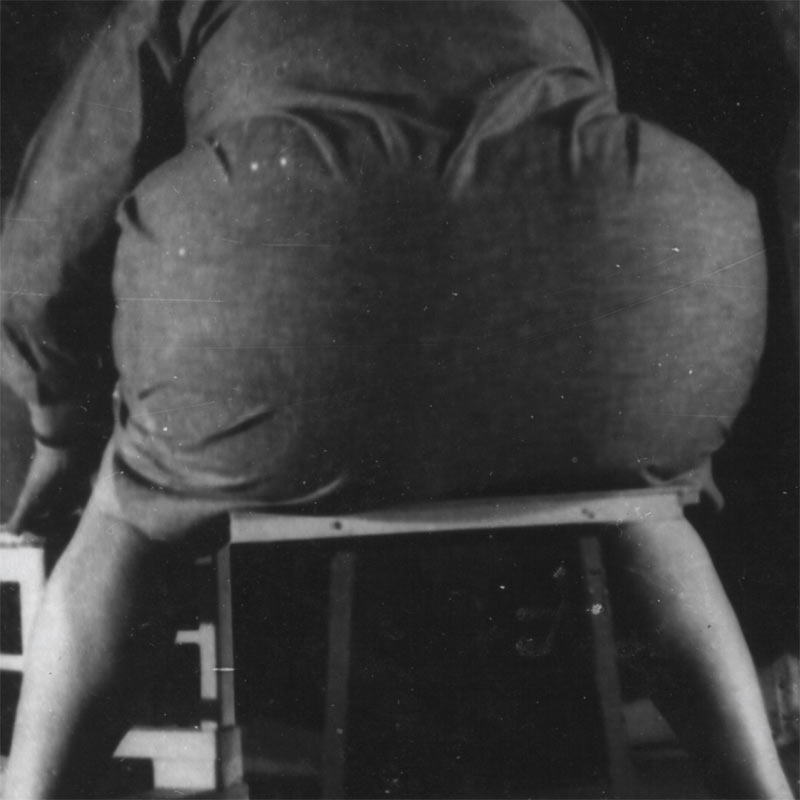 The project “Bermuda Triangle /Outsider Art” /2017/, akin to the earlier initiative of the “tak” gallery “Black Ensign /Outsider Art” [“Czarna Bandera /outsider art”] /2016/ concentrates on the necessity of developing a comprehensive perspective on the problematic of contemporary outsider art in the context of, among other references, Rosi Braidotti’s vision of European transcultural identity “becoming-nomadic,”[3] in which niche begins to create anti-models. The main goal of the project is to transform the familiar model of the dominant culture and the model of “art brut as pure art” into anti-models of niche culture; anarchistic pirate network; introducing a new perspective particularly with regard to the problematic of the “nomad,” migrants, outsider art. The entire recently developed array of new alternative subjectivities situates art brut in a different place than in the era of Jean Dubuffet. We are dealing with hybrid subjects,² who escape unambiguous definition: people from the “margin,” immigrants, sexual minorities, outsiders. These social subjects modify the relation of art brut vis-à-vis culture. The premise of the project consists in nomadic points of view in which it is art brut/outsider art that undergoes the process of becoming nomadic.[4]
The project “Bermuda Triangle /Outsider Art” /2017/, akin to the earlier initiative of the “tak” gallery “Black Ensign /Outsider Art” [“Czarna Bandera /outsider art”] /2016/ concentrates on the necessity of developing a comprehensive perspective on the problematic of contemporary outsider art in the context of, among other references, Rosi Braidotti’s vision of European transcultural identity “becoming-nomadic,”[3] in which niche begins to create anti-models. The main goal of the project is to transform the familiar model of the dominant culture and the model of “art brut as pure art” into anti-models of niche culture; anarchistic pirate network; introducing a new perspective particularly with regard to the problematic of the “nomad,” migrants, outsider art. The entire recently developed array of new alternative subjectivities situates art brut in a different place than in the era of Jean Dubuffet. We are dealing with hybrid subjects,² who escape unambiguous definition: people from the “margin,” immigrants, sexual minorities, outsiders. These social subjects modify the relation of art brut vis-à-vis culture. The premise of the project consists in nomadic points of view in which it is art brut/outsider art that undergoes the process of becoming nomadic.[4]
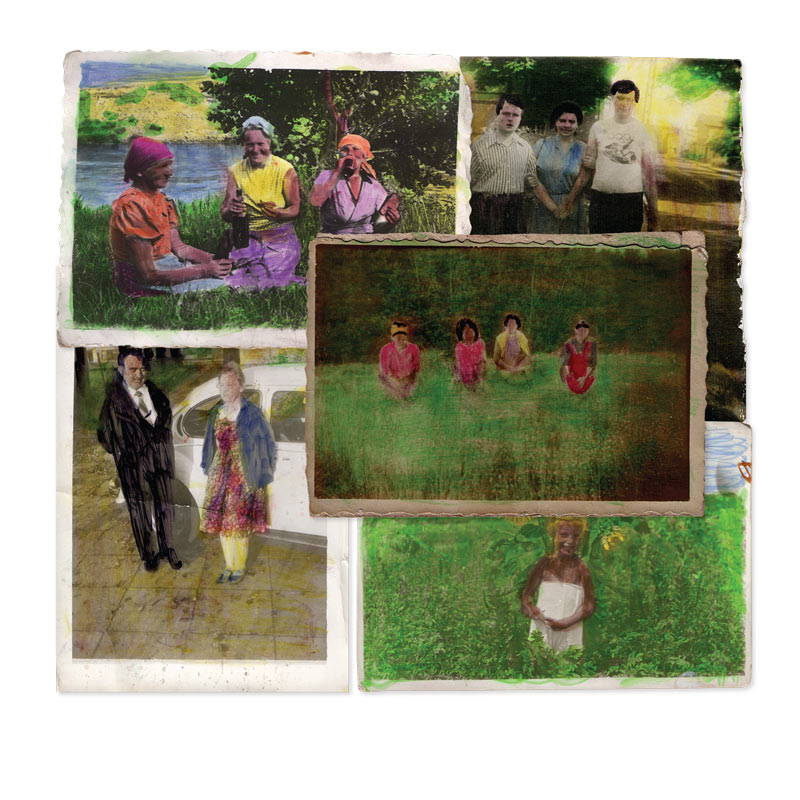 In the context of the search for a new perspective on outsider art, it is impossible not to mention important exhibitions organised during the last two years in Poland – shows curated by Zofia Czartoryska and Katarzyna Karwańska: “Why We Have Wars? The Art of Modern-Day Outsiders” at the Museum of Modern Art in Warsaw and “I’m No Longer a Dog” at the Silesian Museum in Katowice.[5] According to the curatorial concept, both shows created “a new space for radical independent artists whose work does not fit within the confines of institutionalised critical art, or within the patronising and inadequate framework of naïve or non-professional art.”[6] Situating outsider art in the context of a contemporary art museum, and not an ethnographic museum, as well as embedding outsider art in the proximity of the underground defines the outsider’s position in Polish culture anew. The departure point of the Warsaw exhibition was the work of critical artists active beyond the institutional circulation, whereas the Silesian show became a “story of an unknown alternative, the Last Mohicans of the offbeat, outsiders unassociated with any particular circles, amateurs.”[7] Thus, the two exhibitions situate themselves within the dynamics of contemporary culture, doing away with the linear and fixed narratives of outsider art. They open up new perspectives of reflection on art as a social and political phenomenon.
In the context of the search for a new perspective on outsider art, it is impossible not to mention important exhibitions organised during the last two years in Poland – shows curated by Zofia Czartoryska and Katarzyna Karwańska: “Why We Have Wars? The Art of Modern-Day Outsiders” at the Museum of Modern Art in Warsaw and “I’m No Longer a Dog” at the Silesian Museum in Katowice.[5] According to the curatorial concept, both shows created “a new space for radical independent artists whose work does not fit within the confines of institutionalised critical art, or within the patronising and inadequate framework of naïve or non-professional art.”[6] Situating outsider art in the context of a contemporary art museum, and not an ethnographic museum, as well as embedding outsider art in the proximity of the underground defines the outsider’s position in Polish culture anew. The departure point of the Warsaw exhibition was the work of critical artists active beyond the institutional circulation, whereas the Silesian show became a “story of an unknown alternative, the Last Mohicans of the offbeat, outsiders unassociated with any particular circles, amateurs.”[7] Thus, the two exhibitions situate themselves within the dynamics of contemporary culture, doing away with the linear and fixed narratives of outsider art. They open up new perspectives of reflection on art as a social and political phenomenon.
The exhibitions at contemporary art museums gave recognition to such outsiders as Marian Henel, Tomasz Machciński, Konrad Kwasek. Some of them, such as Tomasz Machciński, are now becoming classics, replacing the position of an outsider with that of an esteemed artist. It is the first time that an art museum in Poland (Museum of Modern Art in Warsaw) is planning to purchase a set of photographs by Tomasz Machciński to its collection and include them into the museum archive. And therefore, as the visual artist Zbigniew Libera remarks: “The examples that we are talking about show that the division between outsiders and non-outsiders is arbitrary. It turns out that an outsider can suddenly become a classic.”[8]
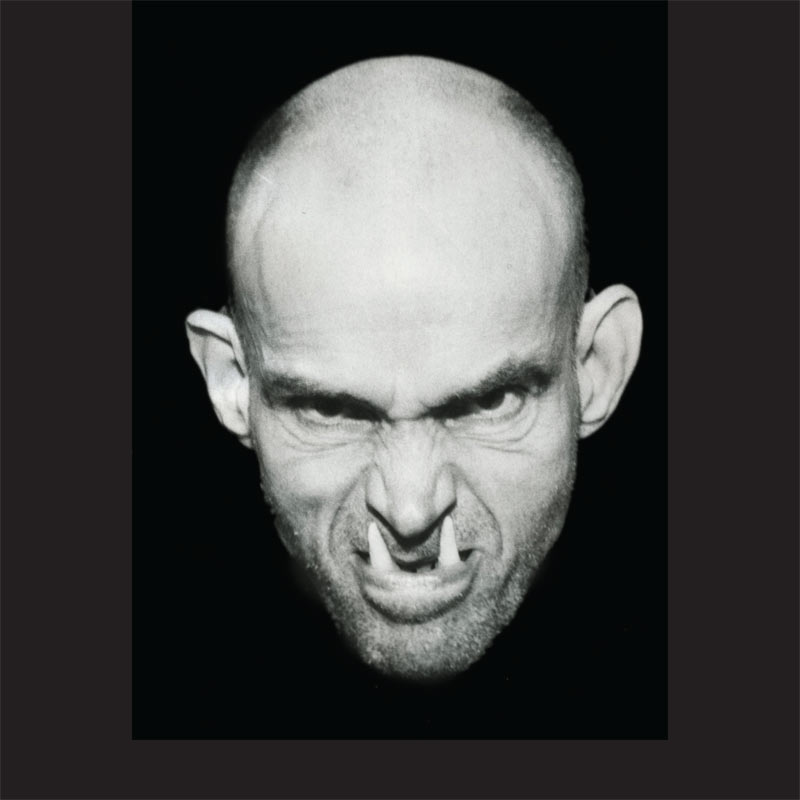 Photo/Eye/Outsider Art is an attempt to include the outsiders Marian Henel, Konrad Kwasek, Tomasz Machciński into the “Bermuda Triangle of photography” right beside such uncompromising outsiders as Lee Godie, Eugene Von Bruchenheim, Miroslav Tichy, Morton Bartlett, Horst Ademeit and many others. It is noteworthy that we are dealing with a global photographic experiment, in which Lee Godie, Cindy Sherman and Tomasz Machciński carry out similar and, at the same time, different experiments, which consist in an undisclosed image, a special kind of hiding behind the form of representation. Analysing the case of Tomasz Machciński, Libera rightly remarked that: “Today, when we look at his total output, we know just how impressively consistent he is in his work. It’s worth recalling that when Machciński started doing his work, Cindy Sherman was still in diapers.”[9]
Photo/Eye/Outsider Art is an attempt to include the outsiders Marian Henel, Konrad Kwasek, Tomasz Machciński into the “Bermuda Triangle of photography” right beside such uncompromising outsiders as Lee Godie, Eugene Von Bruchenheim, Miroslav Tichy, Morton Bartlett, Horst Ademeit and many others. It is noteworthy that we are dealing with a global photographic experiment, in which Lee Godie, Cindy Sherman and Tomasz Machciński carry out similar and, at the same time, different experiments, which consist in an undisclosed image, a special kind of hiding behind the form of representation. Analysing the case of Tomasz Machciński, Libera rightly remarked that: “Today, when we look at his total output, we know just how impressively consistent he is in his work. It’s worth recalling that when Machciński started doing his work, Cindy Sherman was still in diapers.”[9]
Therefore, we encounter recognised uncompromising artists who share the freedom of transformations, similarities, illusion, duplication and erasing reality by means of photography and in photography. The contextualisation of these works, their gender-queer character, is not insignificant. It might be a case of queering the canon,[10] which refers to the negotiation of the heteronormativity of the contemporary image of the world. It is surprising how for each of them: Henel, Kwasek, Machciński, the body becomes a particular medium of art, which plays the roles of performance for camera, conducting research deep within itself and outside it. It is a game with the body that consists in its transformation.
 In the case of Henel, it is a construction of erotic fulfilment in the form of photographic self-portraits of bare buttocks, which the artist frequently used to masturbate. Some of the photographs show Henel in a state of sexual readiness. The curators of the exhibition “I’m No Longer a Dog” hint at the similarity between the work of Henel and that of the New York artist Jack Smith. Yet, I believe that Libera is closer to the truth when he notices the imposing similarity to the works of Hans Bellmer: “His mental state can be compared to that of Hans Bellmer, there’s a brotherhood of spirit. Henel’s photographs by definition were outside of the official world, there’s a heavy charge in them … (Libera shows a clenched fist). Words can’t describe his creativity, you have to see it for yourself.”[11] A fact of key importance is that Henel’s ideal was a corpulent woman, into whom the artist wanted to transform himself at any cost: plucking hair with tweezers from his entire body, eating sugar, constructing buttocks, bra and thick woollen tights that weighed more than 13 kilograms. He was a total perfectionist. He frequently tested and repeated subsequent poses in order to achieve a perfect shot.[12] He was a fetishist. He often posed for photographs in a white nightgown – an attire in which he is said to have made love for the first time. The renowned photography theorist Victor Burgin[13] believes that such kind of representations are acted out to the observation mirror, which in this case is the photo camera itself. The camera compels a mirror relation. When Henel’s body did not live up to his expectations – he was losing weight due to an illness – he used dolls for posing. These photographs are close to Morton Barlett’s idea of dolls and their mute power: “Mannequins and dolls /.../ succumb to all whims of their owner, they serve him in silence expecting nothing in return. They are dead, but they are not a dead body.”[14] Henel also had a penchant for women dressed in waterproof overcoats wrapped around their corpulent bodies. Akin to Miroslav Tichy, he loved to roam the streets and observe women, especially in the rain. Whereas for Tichy women were above all models, for Henel they were an object of desire. Writing about voyeurism, Victor Burgin remarks that its other side is exhibitionism, which “changes its meaning when we are dealing with observation mediated by the camera lens.”[15] The photo/eye of the lens offers the possibility to play roles, combine voyeurism with exhibitionism.[16]
In the case of Henel, it is a construction of erotic fulfilment in the form of photographic self-portraits of bare buttocks, which the artist frequently used to masturbate. Some of the photographs show Henel in a state of sexual readiness. The curators of the exhibition “I’m No Longer a Dog” hint at the similarity between the work of Henel and that of the New York artist Jack Smith. Yet, I believe that Libera is closer to the truth when he notices the imposing similarity to the works of Hans Bellmer: “His mental state can be compared to that of Hans Bellmer, there’s a brotherhood of spirit. Henel’s photographs by definition were outside of the official world, there’s a heavy charge in them … (Libera shows a clenched fist). Words can’t describe his creativity, you have to see it for yourself.”[11] A fact of key importance is that Henel’s ideal was a corpulent woman, into whom the artist wanted to transform himself at any cost: plucking hair with tweezers from his entire body, eating sugar, constructing buttocks, bra and thick woollen tights that weighed more than 13 kilograms. He was a total perfectionist. He frequently tested and repeated subsequent poses in order to achieve a perfect shot.[12] He was a fetishist. He often posed for photographs in a white nightgown – an attire in which he is said to have made love for the first time. The renowned photography theorist Victor Burgin[13] believes that such kind of representations are acted out to the observation mirror, which in this case is the photo camera itself. The camera compels a mirror relation. When Henel’s body did not live up to his expectations – he was losing weight due to an illness – he used dolls for posing. These photographs are close to Morton Barlett’s idea of dolls and their mute power: “Mannequins and dolls /.../ succumb to all whims of their owner, they serve him in silence expecting nothing in return. They are dead, but they are not a dead body.”[14] Henel also had a penchant for women dressed in waterproof overcoats wrapped around their corpulent bodies. Akin to Miroslav Tichy, he loved to roam the streets and observe women, especially in the rain. Whereas for Tichy women were above all models, for Henel they were an object of desire. Writing about voyeurism, Victor Burgin remarks that its other side is exhibitionism, which “changes its meaning when we are dealing with observation mediated by the camera lens.”[15] The photo/eye of the lens offers the possibility to play roles, combine voyeurism with exhibitionism.[16]
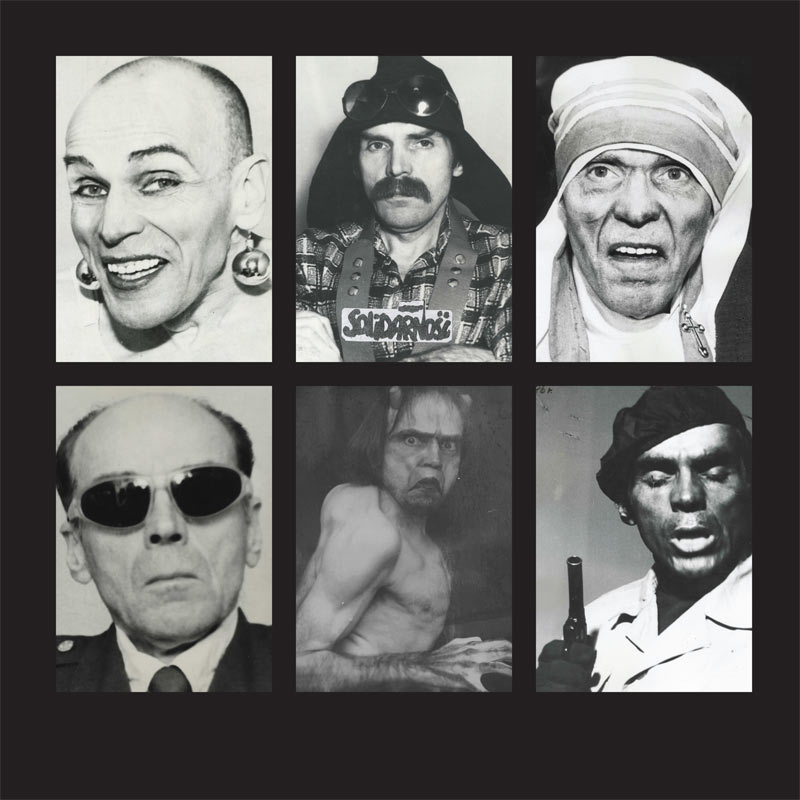 The premise of the total life project of Tomasz Machciński – “A man of 1000 faces” – consists in transformation in order to call another figure into being. “It doesn’t have to be anyone well-known,”[17] as Machciński explains. It is interesting how the artist plays with stereotypes related to sex. Acting as women, he states: “I wanted to show that even a bald woman can be beautiful. Every human being has both female and male elements. And I do indeed talk about the human being.”[18] Machciński is faithful to his creed: “I don’t use wigs, tricks, but I make use of everything that happens to my organism, such as: the growth of hair, the loss of teeth, illnesses, ageing, etc.” It is a consistent observation of one’s own body, which is changing with time. Machciński also indicates an important aspect of his photographs: “You need to be able to make the face look as natural as your own.”[19] Like Lee Godie, Cindy Sherman, Yasumass Morimura, he makes use of allusions to characteristic gestures, poses, derived from observations of people. He assumes the poses of the photographer and the model. He is an observer and undergoes observation. He acts. Yet, he feels to be outside the ego of his protagonist. Machciński “tries on the identities of strangers”[20] and becomes the other, but at the same time preserves his authenticity: “I am these figures.”[21] Machciński’s works have something of the magic “epidermis” of photography, the well-known theory of Olivier Wendell Holmes, who postulated the establishment of a collection of epidermis “sewn akin to book pages.” This is the kind of albums that Machciński created. He used to take them to flea markets in order to sell them. For Machciński, photography is not a simple sign, but a physical document: “There is no deception here. I am these figures: a body-builder, priest, or Jesus. You need to see it in order to believe it.”[22] A fragment of a new story comes into being almost every day. The photographs show Machcińki’s entire life. They are authentic and, at the same time, perfectly false. Jaruzelski is already Machciński’s Jaruzelski, the one in women’s sunglasses: “Jaruzelski wears women’s sunglasses, a Medieval knight holds a shield made of a car wheel rim covering, and the samurai wears a helmet made of a pan lid.”[23] Found objects, poor objects from the second-hand shops[24] and flea markets of Kalisz, such as dentures and pig ears become the indispensable props of transformation. In Machciński’s work, that complete colonisation, falsification of reality, his own perspective given to photography is something captivating.[25] There are no limits to the potential of transformation. Mimic facial movements, gestures can be easily understood and, as Machciński states, “the face speaks louder than words.” What fascinates us is that total acceptance of oneself, one’s own otherness, the play with the body and the outsider’s disarming words: “Tomasz Machciński, a living work of art, it’s a shame to bury me.”[26]
The premise of the total life project of Tomasz Machciński – “A man of 1000 faces” – consists in transformation in order to call another figure into being. “It doesn’t have to be anyone well-known,”[17] as Machciński explains. It is interesting how the artist plays with stereotypes related to sex. Acting as women, he states: “I wanted to show that even a bald woman can be beautiful. Every human being has both female and male elements. And I do indeed talk about the human being.”[18] Machciński is faithful to his creed: “I don’t use wigs, tricks, but I make use of everything that happens to my organism, such as: the growth of hair, the loss of teeth, illnesses, ageing, etc.” It is a consistent observation of one’s own body, which is changing with time. Machciński also indicates an important aspect of his photographs: “You need to be able to make the face look as natural as your own.”[19] Like Lee Godie, Cindy Sherman, Yasumass Morimura, he makes use of allusions to characteristic gestures, poses, derived from observations of people. He assumes the poses of the photographer and the model. He is an observer and undergoes observation. He acts. Yet, he feels to be outside the ego of his protagonist. Machciński “tries on the identities of strangers”[20] and becomes the other, but at the same time preserves his authenticity: “I am these figures.”[21] Machciński’s works have something of the magic “epidermis” of photography, the well-known theory of Olivier Wendell Holmes, who postulated the establishment of a collection of epidermis “sewn akin to book pages.” This is the kind of albums that Machciński created. He used to take them to flea markets in order to sell them. For Machciński, photography is not a simple sign, but a physical document: “There is no deception here. I am these figures: a body-builder, priest, or Jesus. You need to see it in order to believe it.”[22] A fragment of a new story comes into being almost every day. The photographs show Machcińki’s entire life. They are authentic and, at the same time, perfectly false. Jaruzelski is already Machciński’s Jaruzelski, the one in women’s sunglasses: “Jaruzelski wears women’s sunglasses, a Medieval knight holds a shield made of a car wheel rim covering, and the samurai wears a helmet made of a pan lid.”[23] Found objects, poor objects from the second-hand shops[24] and flea markets of Kalisz, such as dentures and pig ears become the indispensable props of transformation. In Machciński’s work, that complete colonisation, falsification of reality, his own perspective given to photography is something captivating.[25] There are no limits to the potential of transformation. Mimic facial movements, gestures can be easily understood and, as Machciński states, “the face speaks louder than words.” What fascinates us is that total acceptance of oneself, one’s own otherness, the play with the body and the outsider’s disarming words: “Tomasz Machciński, a living work of art, it’s a shame to bury me.”[26]
The work of Konrad Kwasek features two aspects of photography: photography created from the very beginning and photography that is found and transformed.
Kwasek’s photographic practice marks a need to transform the face of a white man into a face with a different and darker skin colour. It is a total transformation underpinned by the fascination with the other. It marks taking possession of “strangeness” – so precious in the situation of “becoming nomadic.” Perhaps the thought of Maria Janion – “the artist creates in order to make available a point of view owing to which we can also find ourselves in the place from which things can be seen”[27] – is able to convey in the most comprehensive way the message of Kwasek’s works, their relation between the image and the world. That relation is dictated by the need of appropriating the image for one’s own vision. The colour which Kwasek uses to carry out the transformation vests the act of transformation with an even stronger expression.
Apart from acting out scenes for the camera, Kwasek also “pursued excavations” of the past.[28] The artist made use of photographs from his family album in order to mark them with his own act of creation. In Kwasek’s practice, photography becomes a play on the keepsake, an album that represents memory, determining its relation with cosmic time. It questions the hierarchy of importance of family albums. In the photographs, the artist’s relatives have a modified skin colour or feature additional drawn props. Kwasek carries out their “skinning” once again.[29] What is interesting in the context of the Bermuda Triangle of photography is that ambivalent character of the archive as a place of storing and losing, forgetting, disappearing from memory, erasing.[30] Each of Kwasek’s works is also, despite the created collection of a figures, a Bernhardian form of erasing reality.
All the outsiders evoked here “introduce viruses” into the field of art and reality, they create the dangerous field of the “Bermuda Triangle,” which works against the accepted norms and canons. At the same time, it turns out that art also becomes the Bermuda Triangle for the outsiders themselves, a place where they disappear and owing to which they are able to create their own selves, thus becoming free.
Let us conclude with one more thought of Libera: “They are people who have discovered the release that exercising any kind of creativity gives. They finally have a voice. Until now, they have been pushed aside to the margins, unheard. The ability to create is like a drug, it anaesthetises them, because all of a sudden, they have a different kind of problem from what they experience in their daily lives – a purely aesthetic problem. Simultaneously, this creativity elevates them, because even if they’re sitting in a dirty corner somewhere, they still feel worthwhile. In that sense, art becomes a kind of therapy.”[31]
[1] F. Neususs, Photo recycling Photo, Documenta 7 (Kassel: Universität Kassel, 1982), p. 150,
Neususs departs from the theorem of erasing reality conducted by photography in order to, akin to Thomas Bernhard, prevent erasing – by means of erasing, from: B. Stiegler, Obrazy fotografii. Album metafor fotograficznych, trans. J. Czudec, (Cracow: Universitas, 2009), p. 253.
[2] Ch. Berst, “Exhibiting art brut, The worlds of art brut”, artpress 2, no. 30, Paris 2013, p. 83.
[3] R. Braidotti, “Nomadyczna tożsamość europejska,” in: Koniec Kultury-Koniec Europy. O fundamentach polityki, ed. P. Gilen, (Warsaw: Bęc Zmiana, 2015), p. 113.
[4] M. Szaefer, “Projekt Czarna Bandera / outsider art”, in: catalogue of the exhibition “Black Ensign /Outsider Art,” (Poznań: “tak” gallery, 2016), pp. 2–5.
[5] Exhibition “Why We Have Wars? The Art of Modern-Day Outsiders”, Museum of Modern Art, Warsaw, 19th February – 1st May 2016; exhibition “I’m No Longer a Dog,” Silesian Museum, Katowice, 1st April – 10th September 2017.
[6] Cf. Exhibition catalogue “I’m No Longer a Dog,” Silesian Museum, Katowice, 1st April – 10th September 2017. http://niejestemjuzpsem.muzeumslaskie.pl/en/about/
[7] Cf. R. Jarosz, “An Interview with Zbigniew Libera on the Art of Outsiders,” in: exhibition catalogue “I’m No Longer a Dog,” http://niejestemjuzpsem.muzeumslaskie.pl/blog/projects/en-libera/
[8] Ibid.
[9] T. Machciński created his first photographs in 1966. Cindy Sherman created “A Play of Selves,” her first work based on changing identities, in 1975 and “Untitled Film Stills” in 1976 roku.
[10] Term “queering the canon” from E. Majewska, “Nowy wyraz,” Notes na 6 Tygodni, no. 2, 2017, p. 107.
[11] R. Jarosz, “An Interview with Zbigniew Libera on the Art of Outsiders.”
[12] Cf. K. Czuma, T. Semik, S. Wodyński, Diabelski pomiot w szpitalu psychiatrycznym czyli życie i twórczość Mariana Henela, ed. K. Czuma (Branice: Oficyna Wydawnicza Zakładu Aktywności Zawodowej, 2012).
[13] V. Burgin, The Remembered Film (London: Reaktion Books, 2004), p. 45.
[14] M. Bakke, Ciało otwarte. Filozoficzne reinterpretacje kulturowych wizji cielesności (Poznań: Wydawnictwo Naukowe Instytutu Filozofii UAM, 2000), p. 160.
[15] Cf. M. Michałowska, Obraz utajony. Szkice o fotografii i pamięci (Cracow: Galeria f5 & Księgarnia Fotograficzna, 2007), p. 121.
[16] Cf. S. Sontag, On Photography (New York: St. Martin’s Press, 1986). The unavoidable comparison between the photographic camera and phallus made by S. Sontag becomes twice as unavoidable in the case of the photographic work of M. Henel.
[17] From a conversation with the artist in Kalisz, 17th December 2016.
[18] From a cnversation with Machciński at the “tak” galery during the opening of the exhibition “Tomasz Machciński. Man of 1000 Faces”, 18th December 2016.
[19] Cf. film “Amator”, dir. M. Nowakowski, 1978; film “Incognito” dir. H. Dederko, 1988.
[20] Ch. Cotton, Fotografia jako sztuka współczesna, trans. M. Buchta, P. Nowakowski et al. (Cracow: Universitas, 2010), p. 196.
[21] Artist’s statement in the film “Amator” by M. Nowakowski, 1978.
[22] M. Stelmach “Szkoda mnie zakopać. Rozmowa z Tomaszem Machcińskim,” Dwutygodnik, http://www.dwutygodnik.com/artykul/6421-szkoda-mnie-zakopac.html
[23] R. Pawłowski, “17 tysięcy twarzy Tomasza Machcińskiego”, Gazeta Wyborcza.pl, http://warszawa.wyborcza.pl/warszawa/1,34862,19681433,17-tysiecy-twarzy-tomasza-machcinskiego-felieton.html
[24] “They already know me at second-hand shops in Kalisz. I go there like an angler and always angle interesting props,” quoted from M. Stelmach „Szkoda mnie zakopać...”.
[25] Reference to the falsification of photography, which was an object of Michael Foucault’s fascination.
[26] M. Stelmach, “Szkoda mnie zakopać...”.
[27] M. Janion, Żyjąc tracimy życie. Niepokojące tematy egzystencji (Warsaw: WAB, 2007), pp. 258–259.
[28] According to the thought of Walter Benjamin, who wants to get closer to the past needs to act like a man who pursues excavations. Memory is akin to photography, and the time of life is akin to the time of exposure.
[29] The album is a collection, an archive of skins according to the theory of Ulrich Raulff. When we photograph, we remove the skin from something, akin to Apollo, we “skin.” Photography appears as a “trophy of skinning.”
[30] According to Thomas Bernhard, photography shows a “perversely deformed world,” and is therefore an effective means of erasing reality, cf. T. Bernhard, Extinction, trans. D. McLintock (London: Penguin Books, 1996), s. 25.
[31] R. Jarosz, “An Interview with Zbigniew Libera...”.
